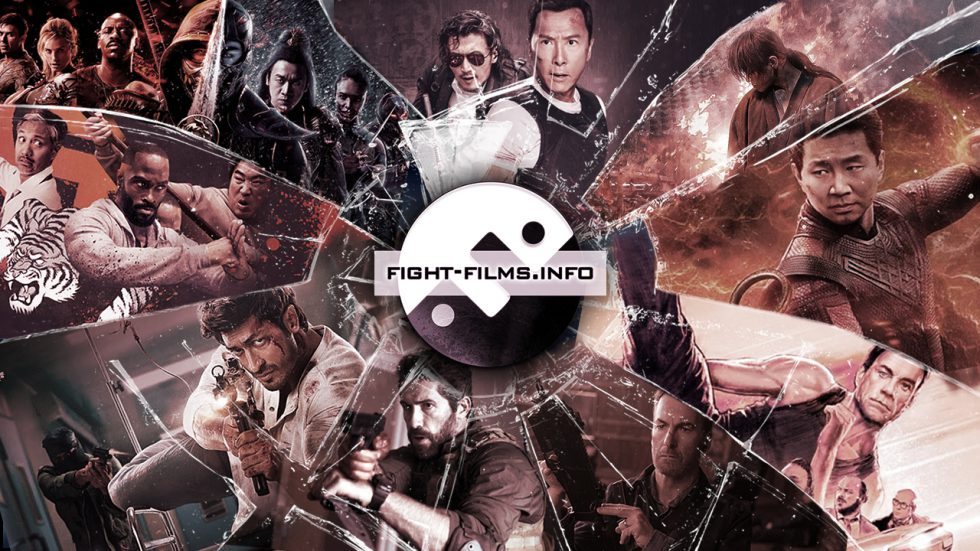
С годами и опытом проведения мероприятия по подведению итогов боевого кино мы поняли, что спешить мы а) не можем и б) не хотим. Ведь для наших читателей редакция старается выпускать максимально качественные аналитические материалы. Поэтому итоги мы подводим долго и упорно.
В середине мая мы уже почти традиционно представляем вам аналитику по победителям в одной из самых главных номинаций - лучшая боевая схватка за 2021 год. Поскольку вам понравилось нововведение с понравившимися редакции боями, мы расписали и те бои, что приглянулись нам, но не заслужили достаточного количества голосов.
В общем, мы как и всегда очень рады комментариям и вашим дискуссиям по поводу.
Победители в голосовании
Донни Йен против Николаса Це (Перекрестный огонь) (16%, 30 голосов)
Постановщики: Донни Йен и Кан Юй (постановка боевых сцен), Кэндзи Танигаки (координатор трюков).
Локация: строящаяся церковь. Временами появляющаяся локация в различных боевиках. В церквях устраивали пистолетные дуэли герои вестернов и боевиков Джона Ву. Еще, например, в церкви дрались Скотт Эдкинс, Оливье Грюнер, Бен Аффлек, Чарли Кокс и другие.
Стиль: современная гонконгская хореография с элементами MMA.
Продолжительность сцены: около 8 минут с разговорами.
Количество участников: один на один.
Главная фишка: Донни Йен вернулся к столь любимому многими жанру городского боевика, будучи в солидном возрасте.
Особенности и специфика: с момента выхода таких культовых полицейских боевиков с Йеном, как “SPL. Звезды судьбы” и “Горячая точка” прошло 16 и 14 лет соответственно, но поклонники Донни все еще хотят от него “тот самый стиль ведения боя”, что так приглянулся им в вышеназванных фильмах. Последний герой рукопашного китайского боевика пытался дать то, что от него ждут в фильмах “Особая личность” (2013) и “Большой брат” (2018), но именно в “Перекрестном огне” Донни Йен и Николас Це смогли реализовать фанатские хотелки.
Стоит ли говорить, что когда Це крутит в руках ножи-бабочки, а Йен под тревожную музыку вынимает и раскладывает полицейскую “телескопичку”, по коже пробегает волна воспоминаний. Собственно, весь бой - это и есть одна большая ностальгия по крепким схваткам китайских боевиков начала нулевых.
Сначала бой ведется с применением холодного оружия - герой Николаса Це пытается достать противника одним из ножей не только махая ими перед лицом оппонента, но и швыряя их в него. Йен защищается и периодически нападает с помощью полицейской дубинки, вызывая стойкие ассоциации с боем того же Донни против Джеки Ву из “Звезд судьбы” (2005) - такие же размашистые и беспорядочные движения, такая же “гуляющая” камера, иногда показывающая крупные планы.
Затем противники схватываются в рукопашную, и уж тут Йен что называется “отводит душу” с помощью различных захватов, бросков, удушающих и болевых приемов, лишь несколько раз отвлекаясь на удары ногами. Кстати, львиная доля киков пришлась как раз на Николаса, ведь Донни уже давно не молод.
Финал поединка авторы решили не завершать банальным коронным ударом, а попытались сделать его мелодраматичным и пафосным. Не сказать, что очень убедительно, но очень традиционно для китайцев.
Главные минусы боя: кажется на первый взгляд, что концепт боя - это “тот самый Донни”, но все же это не так. И градус эмоций не настолько высок, и натяжения нерва маловато, и коронные удары хоть и показаны, но сняты не так ярко, отчетливо и впечатляюще, как мы привыкли. Монтаж вроде бы тоже аутентичный, но несколько небрежный, смазывающий контактность и красоту движений. Одна из причин вялого нерва - это музыка, больше похожая на череду саунд-эффектов и наложенных друг на друга различных сэмплов из библиотек кинематографических звуков (к сожалению, в современном кино такое сплошь и рядом). Синхронизация звуков с экранным действием есть: бицепсы Донни подчеркиваются паузой и гитарными нотами с перегрузом, изменение ритма боя сопровождается ускорением пульсации музыки, но все равно, по большей части - этакое “уханье и бумканье” на заднем плане, исключение составляет лишь игра на рояле лицом Николаса Це, - этот саундтрек уже в тему. Под конец боя музыка плавно перетекает в симфоническую часть, но почему-то в мажорную по настроению.
Еще нельзя пройти мимо “неубиваемости” персонажа Йена: в его ногу втыкают нож, бьют кувалдой с размаха по ребрам, но в хореографии эти травмы никак не обыгрываются.
Итог: к долгожданному бою в стиле нулевых Донни Йен пришел в возрасте 55 лет, поэтому сам же поставил себе работу в обороне, практически не нападая. Также он сильно ограничил себя в плане ударов ногами, оставив “коронку” и странный пируэт, исполненный дублером. Для такого боя 39-летний Николас Це оказался идеальным соперником, поскольку всю карьеру являлся трудолюбивым исполнителем. Поэтому схватка между этими двумя все-таки вызывает нужные эмоции, нарабатывая таким образом на золото.
Боб Оденкерк против гопников в автобусе (Никто) (14%, 27 голосов)
Постановщики: Дэниэл Бернхард (постановка боевых сцен), Дэн Скин и Грег Рементер (координаторы трюков).
Локация: городской автобус. Общественный транспорт во всем его многообразии - это любовь каждого экшн-режиссера. Лупили врагов головой о поручни Киану Ривз и Джейсон Стэйтем, Сильвестр Сталлоне и даже Салман Кхан. Да и чего далеко ходить, один из наших номинантов, Симу Лю, показывал мастерство кунг-фу в несущемся по дороге автобусе.
Стиль: актерский бой в эстетике неореализма (голливудский неореализм).
Продолжительность сцены: чистого боя 4 минуты.
Количество участников: пятеро против одного.
Главная фишка: прием “пенсионеры снова в седле” и метод “Джона Уика”: хороший и трудолюбивый актер, будучи непрофессиональным экранным бойцом, выглядит в кадре мощно и убедительно.
Особенности и специфика: Пожалуй, главная особенность данной сцены заключается именно в хореографии, которая была поставлена Дэниелом Бернхардтом специально для 57-летнего актера Боба Оденкерка, который ранее в экшен-ролях замечен не был. По задумке режиссера, герой Боба испытывает нехватку острых ощущений, которые остались в прошлой жизни, поэтому он решает проучить пристающих к девушке негодяев “голыми руками”, а посему в кадре максимально должен был находиться титульный актер, оставляя дублерам исключительно моменты с падениями.
Сама хореография максимально сдержанная и с точки зрения заучивания движений довольно простая, но поставленную задачу она выполняет: великовозрастные гопники набрасываются на протагониста сначала по одному, ведь в автобусе мало пространства, затем, когда соперники уже получили на раздачу, пытаются атаковать героя Оденкерка скопом, нанося удары руками и ногами. Тот защищается и контратакует. В ход идет все: ножи, ремни безопасности, бутылка, автобусные поручни и даже часы. Но герой в своей жажде надавать хулиганам тумаков по первое число не останавливается даже после того, как его выбрасывают из автобуса через стекло, после чего он возвращается в автобус и завершает начатое.
Кстати, постановщики немного разряжают напряжение боя за счет юморных вставок - так схватка смотрится органично, заряжая зрителя некой постмодернистской иронией, которой пропитан весь фильм. Кроме того, через юмор нам объясняют, что за персонаж перед нами, чей красноречивый победный уход в закат только подчеркивает эту иронию.
Главные минусы боя: отечественный зритель удивится неожиданному Александру Палю, зарубежный - узнает Дэниэла Бернхардта, а может быть даже и Алена Мусси, больше похожего на фотомодель, чем на гопника, но вряд ли что-то запомнит после просмотра. Хорошо поставленная драка, крепкая демонстрация ремесла и, пожалуй, ничего больше. Мы все это видели уже много-много раз.
Итог: очередной пример того, что актерская работа всех участников экранного поединка не менее важна, чем бойцовские скилы, а интересный подход к драматургии внутри боя всегда будет цениться больше, чем, пусть и выверенная, но стерильная с точки зрения эмоциональности “шоурильная” хореография.
Видьют Джамвал против террористов в комнате физиотерапии (Псих) (10%, 19 голосов)
Постановщики: Энди Лонг он же Андреас Нгуен (постановщик боевых сцен, координатор трюков), Даниэль Балкони (координатор трюков).
Локация: больница. Про киношные перестрелки в больнице вам отлично расскажет наш ролик “ТОП-10 перестрелок в кино, снятых одним кадром”, в котором есть две такие сцены. А вот если вспоминать именно драки в больничных палатах, то тут парочкой примеров не обойдешься: ЖКВД в “Прикончи их всех”, Скотт Эдкинс в “Ликвидаторах”, Джеки Чан в третьем “Часе пике”, Джеки Ву, Ико Ювайс и многие другие.
Стиль: нео-гонконгская школа (индийский ответ Джеки Чану)
Продолжительность сцены: почти 3 минуты
Количество участников: трое против одного
Главная фишка: герой болливудского фильма дерется в кадре как заправская звезда рукопашного экшена Гонконга 80х
Особенности и специфика: член ассоциации каскадеров Джеки Чана и постановщик Энди Лонг никогда не скрывал своей любви к гонконгским хитам 80х и в собственных проектах всегда реализовывал именно этот стиль хореографии. Однажды пути Лонга и звезды Болливуда Видьюта Джамвала пересеклись и вот они уже сделали вместе три фильма. Разумеется, Энди привнес в экшен с Джамвалом немало референсных боев, которые индус с удовольствием (по его словам) отработал.
Бой против наемников в палате физиотерапии отсылает нас к фильмам Джеки Чана 80х, где герой боевиков в схватках применял все, что под руку попадется, но такого “ассортимента” предметов, как здесь в карьере Чана еще не было. Вероятно, так и подумал Лонг, поместив героя и злодеев в пространство с шарами для шейпинга, спортивными резинками, гантелями, штангами и прочей спортивно-восстановительной утварью.
В лучших традициях фильмов Чана на героя нападают сразу все противники, а тот использует различные предметы в комнате для того, чтобы от них отбиться. Положа руку на сердце, элемент с резинкой практически гениален. Ритмически бой не провисает, так как перед глазами зрителя не утихает ураган действия вплоть до той части, где герой Джамвала и женщина-наемник ныряют в бассейн.
Главные минусы боя: то ли индийские танцевальные традиции слишком сильны, то ли заигрались в Джеки Чана, утонули и референсах и забыли, что хореография в этом жанре должна быть в первую очередь боевая, а значит в поединках должен быть контакт и урон, а не прелюдии, во время которых зритель ждет, когда же начнется настоящее месиво. Тем более, что главного персонажа именуют Психом, ни больше ни меньше. Да и как-то нелепо герой Джамвала выводит из строя двух наемников - не хватило какого-то решающего удара, говорящего о том, что подлецы отключились.
Итог: понятно, почему посетители нашего сайта отдали голоса за этот бой - мы все скучаем по крутым схваткам из рукопашного кино Гонконга 80х, и, по большому счету, такую ностальгическую хореографию ставят и реализуют не так много постановщиков. И если на поприще короткометражного кино это встречается чаще, то в больших полнометражных проектах такое увидишь нечасто. Хороший динамичный бой, постановка которого была бы достойна и старины Джеки.
Выбор Редакции
Такэру Сато против Макэню Араты (Бродяга Кэнсин: Финал) (6%, 11 голосов)
Постановщик: Кэндзи Танигаки (постановщик боевых сцен, координатор трюков), Кэндзи Сато (координатор трюков).
Локация: каменный дом в классическом стиле, японский сад. Разумеется, самая частая локация самурайского кино, снятого что в Японии, что в Голливуде. От Тосиро Мифунэ и Синтаро Кацу до Тома Круза и Хью Джекмана, в тысячах фильмах мелькали катаны в интерьере японского жилища, бросая отблески металла сквозь опадающую сакуру.
Стиль: современная японская хореография.
Продолжительность сцены: около 12 минут с учетом диалогов.
Количество участников: один на один.
Главная фишка: эмоциональное подведение итога целой франшизы.
Особенности и специфика: На самом деле, редакция FFI считает этот бой лучшим среди всех номинантов этого года. Любопытно, что два года назад редакция тоже отметила в числе своих любимчиков поединок на мечах. Значит ли это, что хороших боев с применением холодного оружия нынче немного? Да, значит!
Читатели неплохо голосовали за “Кэнсина”, но лайков набралось лишь на 7 место. Это не полный провал, ибо того же Эдкинса поединок обскакал (брызги шампанского, хлопушки, истерические крики радости), но честно говоря, хотелось бы лучшего признания.
Те, кто смотрел всю линейку серии фильмов “Бродяга Кэнсин” увидит в этой схватке классическую хореографию, характерную для всех пяти картин: размашистый вихреобразный поединок, где катаны мелькают со скоростью света, с отчаянием, гневом и адреналином в каждом брызге крови. Удачный пример работы с пространством и световым оформлением локаций, а использование тросов в нем - умное, концептуальное, стилистически оправданное. Противники несутся словно каскад, полукругом скользят по земле и бегают по стенам, причем, если присмотреться, то можно заметить, что Кэнсин и Эниси практически никогда не дерутся в центре под холодным светом, а скрещивают мечи по периметру комнаты, лишь изредка пересекая круг.
Понятное дело, что взаимодействие мечников в таком плотном контакте и с такой дистанцией заставит менять технику ведения боя и хореографию, поэтому мечами здесь бьют как палками, иногда просто наотмашь. Благо, это сюжетно уместно, поскольку у главного героя катана не заточена.
Главные минусы боя: редакция с удовольствием хотела бы написать, что минусов нет, и по большому счету это так. Скорее, присутствуют моменты, которые могут оттолкнуть некоторых зрителей, и связаны они с большим хронометражем и несколькими длинными паузами, заполненными диалогами. Любители жанра все поймут и для них это не будет проблемой, скорее даже наоборот, а не фанаты могут захотеть перемотать. Но с другой стороны, будут ли “случайные” зрители прицельно смотреть серию фильмов про Кэнсина? Ну, и если уж совсем придираться, то частенько заметно, что мечи у персонажей игрушечные.
Итог: мощный и эмоциональный бой, красиво снятый в аутентичном интерьере и достойный финал заключительного на текущий момент фильма про бродягу Кэнсина. Оно и понятно: боевой хореограф из команды Донни Йена - Кэндзи Танигаки, ерунду не снимет.
Льюис Тан и Хироюки Санада против Джо Таслима (Мортал Комбат) (5%, 9 голосов)
Постановщики: Чан Гриффин (постановка боевых сцен), Кайл Гардинер (координатор трюков)
Локация: октагон. На ринге для проведения боя по правилам MMA выясняли отношения бесконечные герои спортивных драм и боевиков вроде Эктора Эчавария, Майкла Джей Уайта, Скотта Эдкинса и многих других, включая случайного Джета Ли в “От колыбели до могилы”.
Стиль: адаптация игровых механик под боевую хореографию
Продолжительность сцены: около 7 минут.
Количество участников: сначала один на один, затем двое против одного.
Главная фишка: реализация приемов персонажей компьютерного файтинга в кино
Особенности и специфика: с одной стороны, мы, будучи поклонниками франшизы Mortal Kombat были расстроены тем, что в фильме практически нет действительно крутых боев. С другой, мы рады, что ровно две схватки в фильме достойны похвалы и обе они сталкивают друг с другом Скорпиона и Саб-Зиро. Поэтому мы не могли не выделить хотя бы один бой этих культовых персонажей и выбор пал на финальное противостояние.
Скорпион в исполнении Хироюки Санады появляется в самый отчаянный момент, когда злодей пытается убить его потомка Коула Янга, сыграл которого Льюис Тан. С этого момента начинается жестокий бой один на один, в рамках которого можно уловить современную японскую хореографию с размашистыми ударами мечей, блоками мгновенно переходящими в контратаку и работу на нижнем уровне.
Но главное в этом бое - реализация игровых приемов персонажей в рамках хореографии, львиная доля которых пришлась на персонажа Джо Таслима. Что вы помните о Саб-Зиро? У него есть ледяной меч, он может замораживать людей, швыряться острыми сосульками, обманывать противника с помощью ледяного клона и выращивать ледяную же стену, чтобы затем разломать ее соперником. Классно реализован момент, когда Саб-Зиро режет мечом Скорпиона, замораживает его кровь и эту кровяную сосульку в него же и втыкает. Именно такого мы ждем от боев между героями Смертельной Битвы!
Скорпион отлично машет мечом, не забывая использовать свой легендарный аркан. Стоит сказать, что 80% боя отработал сам Санада, которому на момент съемок было почти 60 лет. Он и Таслим вообще создали на экране довольно синергичный дуэт, который и тянул ремейк MK. Вы только обратите внимание, как оба актера играют глазами при условии надетых масок. Это работает в огромный плюс в их столкновении, обогащая таким образом хореографию дополнительной драматургией.
Главные минусы боя: несмотря на то, что сюжет картины предполагает наличие главного героя, а тема “спасения семьи” проходит красной нитью через весь род Хасаши, кажется, что Коул Янг в этой схватке не очень обязателен - настолько самодостаточно выглядят Скорпион и Саб-Зиро не только как файтинг-персонажи и экранные бойцы, но и как носители многовековой вражды, точку в которой они собственно и ставят в схватке. А персонаж Льюиса Тана со своими дубинками и мелко-сочными проблемами мог бы заняться чем-то более полезным. Не зря Скорпион в какой-то момент отправляет его: мол, иди-ка помоги своей семье, разбивай ледышки, а батя все порешает. В итоге, там, где начинается командная работа предка и прадеда, Коул с перманентно “потерянным” лицом тоже кажется лишним.
Итог: отличный финальный поединок, который показывает, что в пороховницах Санады есть еще порох, что Джо Таслим не только отменный боец, но и прекрасный актер, и что сделанные с фантазией бои - это необходимость для экранизаций компьютерных файтингов. Жаль, что такой живой, интересный и жестокий поединок на весь фильм всего один.
Симу Лю и Чжан Мэнъэр против наемников на строительных лесах (Шан-Чи и легенда десяти колец) (5%, 10 голосов)
Постановщики: Энди Чэн (постановка боевых сцен), Брэдли Аллан (координатор трюков).
Локация: строительные леса. Не самая часто встречающаяся локация для экранных поединков. На ум приходит схватка Джеки Чана в фильме “Час пик 2”.
Стиль: высокобюджетное современное кунг-фу
Продолжительность сцены: около 4х минут с учетом диалогов.
Количество участников: редакция FFI насчитала трех положительных персонажей, одного Торговца Смертью и штук 10 безымянных ниндзя.
Главная фишка: фишка принадлежит скорее фильму в целом, чем отдельным боевым сценам, и о ней мы упоминали в других статьях подведения итогов - редкий случай, когда боевые искусства являются центральной темой дорогого блокбастера от Marvel.
Особенности и специфика: очень референсный бой, содержащий в себе много классических жанровых элементов. И локация поединка и схема, в которой главные герои дерутся против десятка ноунейм-наемников в масках, и друг, а в нашем случае подруга главного героя, которая вставляя шутки, убегает от злодеев, как бы случайно побеждая их - все это до боли знакомые приёмы.
Сам бой, при том что он многосоставной и трюковой, снят очень плавно и динамически точно, когда главный герой почти в одно касание, в один вектор движения бьется с врагами, перепрыгивает через конструкции, получает удар током, после чего снова скачет сквозь толпу. При этом камера всегда следует за героями, давая разглядеть каждую деталь экшен-сцены в подробностях.
Поединок можно разделить на две части: первая - это бой брата и сестры против ниндзя на строительных лесах, а вторая - бой Шан Чи против Торговца Смертью в исполнении Энди Ле на этаже этого же строящегося небоскреба, который значительно больше раскрывает боевое мастерство актеров. Эта резвая схватка проходит, если так можно выразиться, на нижнем уровне, где антагонист нападет с помощью подсечек, ударов в стиле капоэйра и ножа, а герой защищается в ответ и, в какой-то момент перехватывая инициативу, практически одолевает врага.
Все это сопровождается флешбеками, которые у редакции FFI вызывали не столько эмоциональное вовлечение в бой, сколько вопрос: а какой возраст у этого Торговца Смертью? Или может быть их там в банде несколько штук? А может это звание передается по наследству или по результату собеседований? Но, так или иначе, этот поединок не просто красиво поставлен и исполнен без раздражающей постобработки, неуместных тросов и дергающейся камеры, но и имеет поворотное сюжетное значение, когда герой Тони Люна получает нужную ему часть амулета.
Главные минусы боя: минусы, пожалуй, кроются в самом главном герое, который играет мастера боевых искусств с детства обученного убивать, но при этом ведущего бой исключительно в обороняющимся стиле. Даже когда дело доходит до проявления агрессии, то делает это Симу Лю с каким-то извиняющимся лицом. Понятно, что этому есть чисто драматургическое сюжетное объяснение, но все равно яиц и “правильной” агрессии главному герою очень не хватает.
Итог: хороший и ровный поединок с умеренным возрастным рейтингом, работающий на любую аудиторию: как на любителей комиксных блокбастеров, так и на фанатов боевых искусств в кино. Ждем продолжения.
Метки: Mortal Kombat, Nobody, Raging Fire, Rurouni Kenshin: The Final, Sanak: Hope Under Siege, Боб Оденкёрк, Брэдли Джеймс Аллан, Видьют Джамвал, Джо Таслим, Донни Йен, Дэниэл Бернхард, итоги боевого кино 2021, Кэндзи Танигаки, Льюис Тан, Макэню Арата, Николас Це, Подведение итогов боевого кино, Симу Лю, Такэру Сато, Хироюки Санада, Чжан Мэнъэр, Энди Ле, Энди Лонг, Энди Чэн, Юй Кан



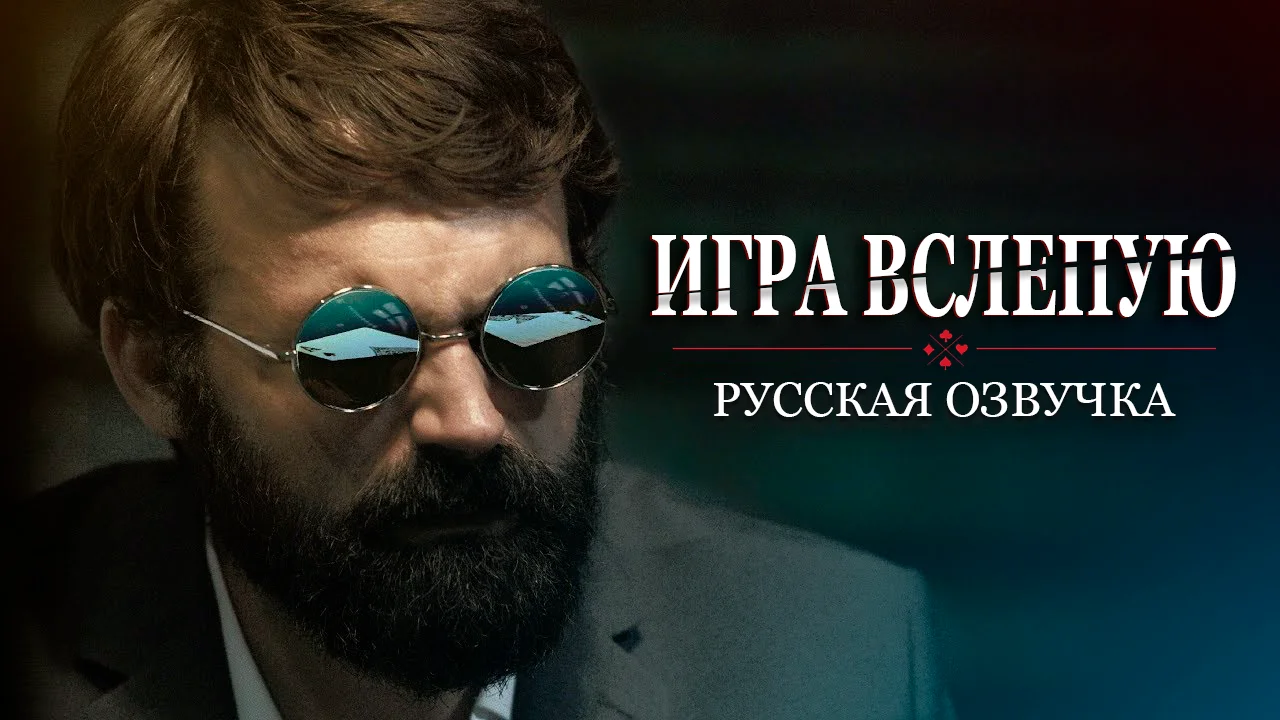

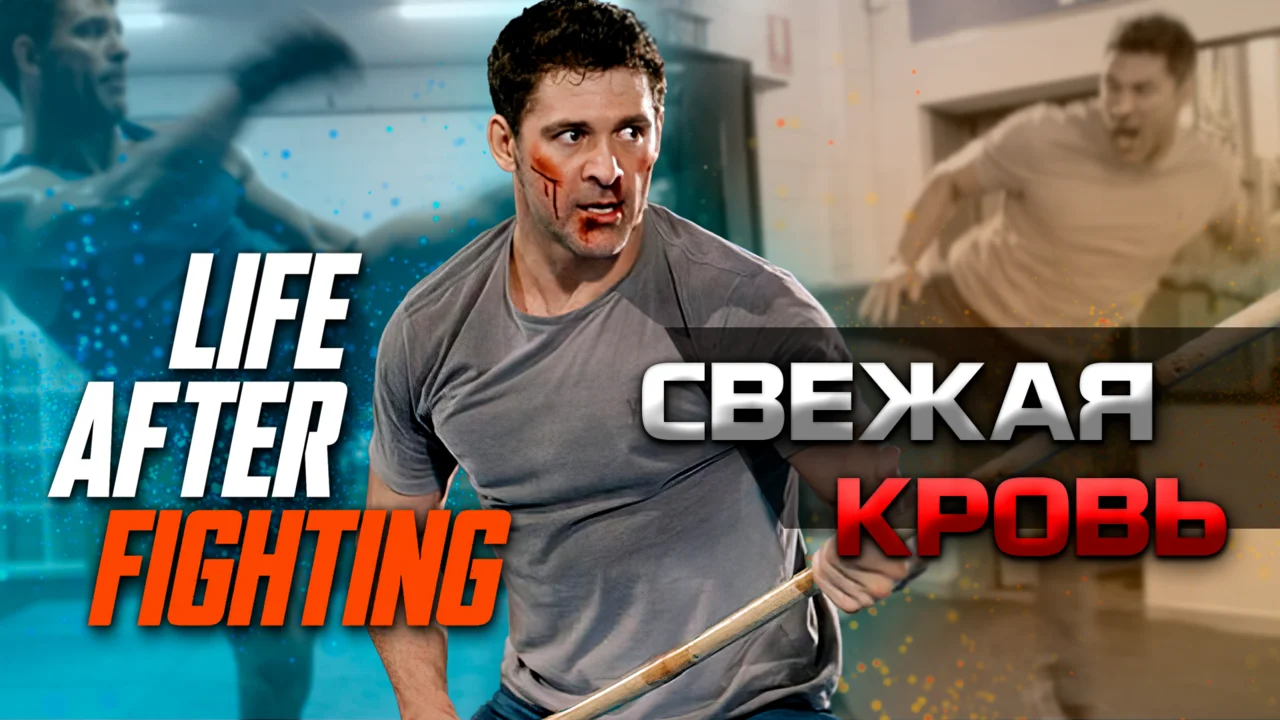
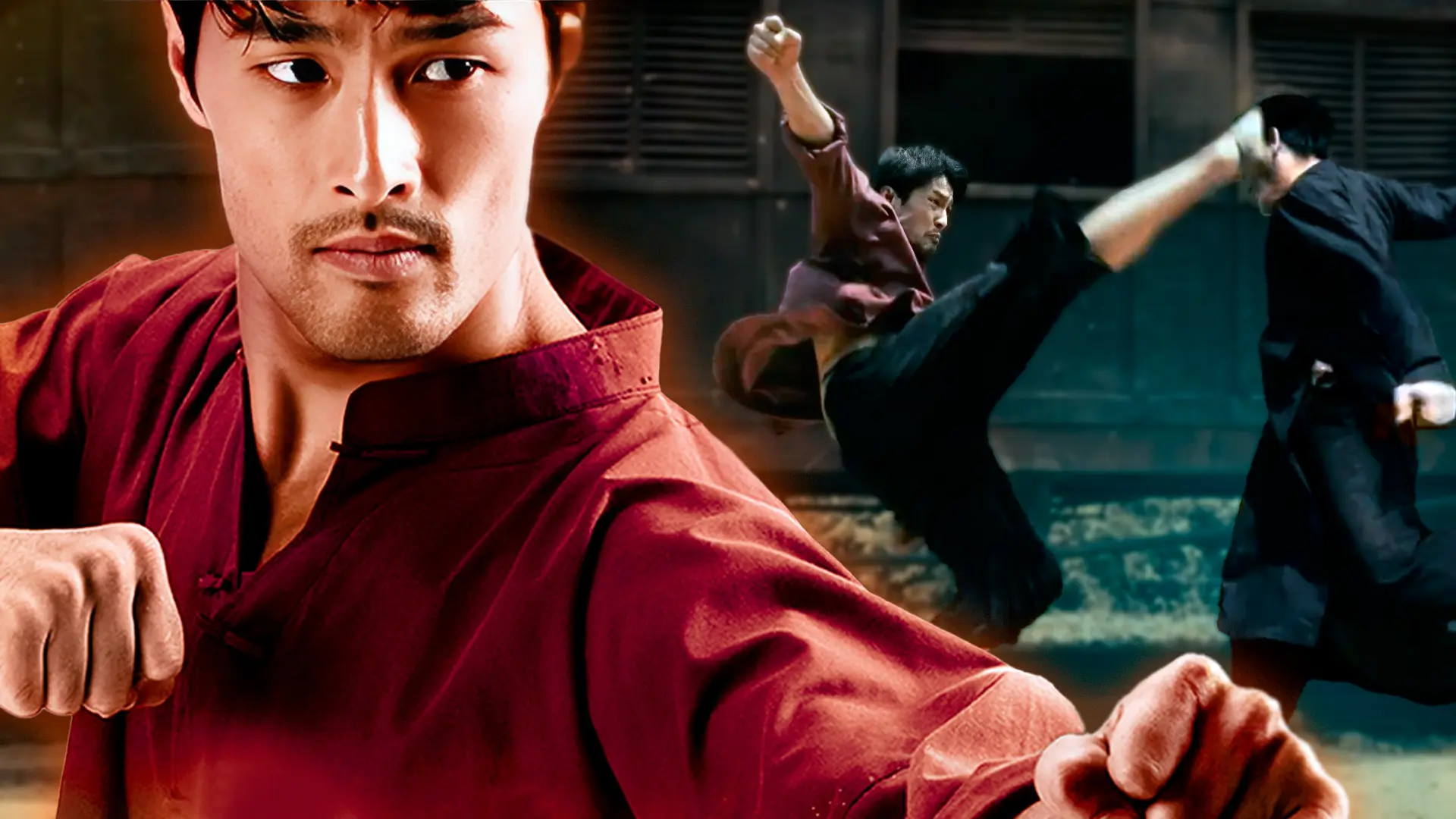
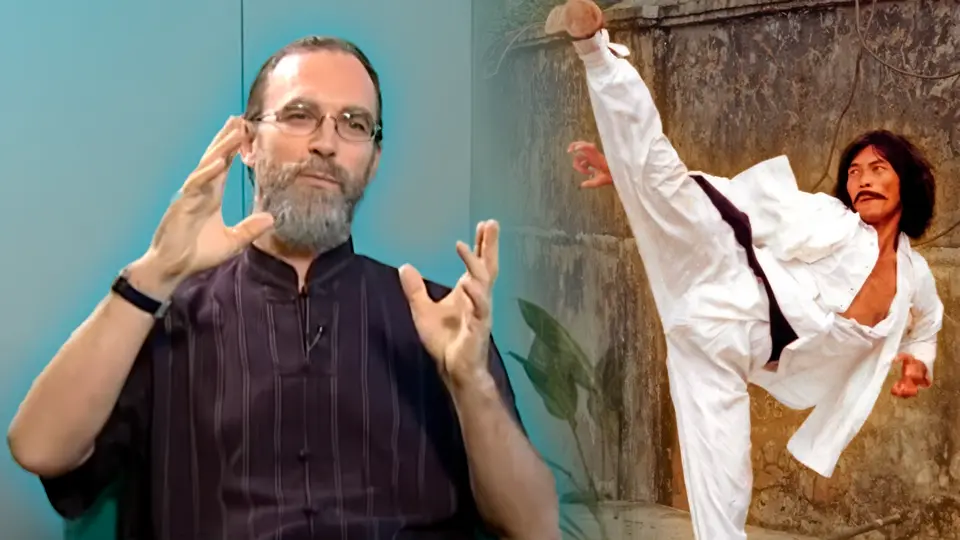


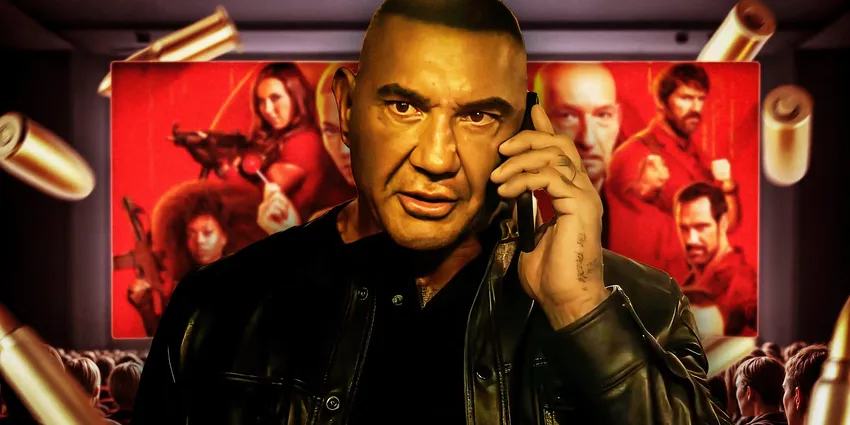


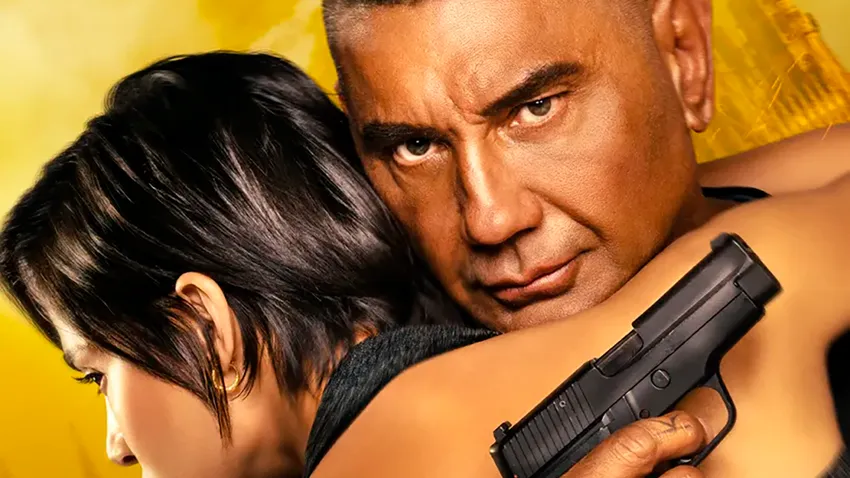
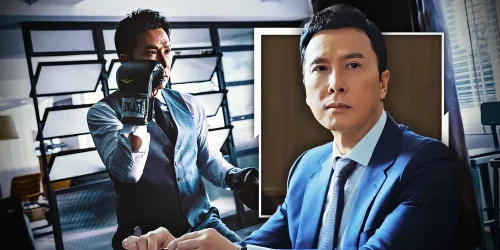
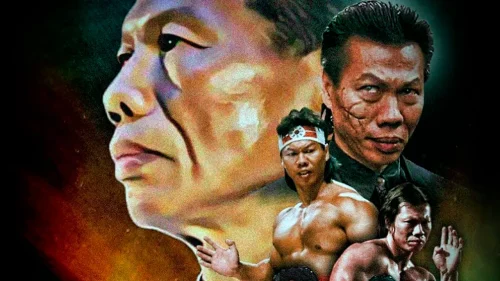
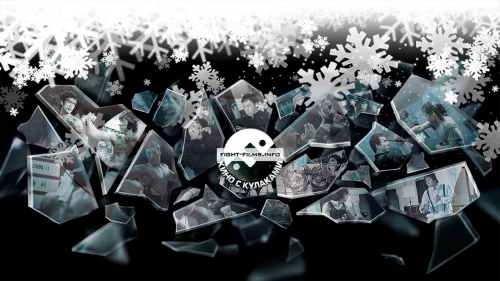
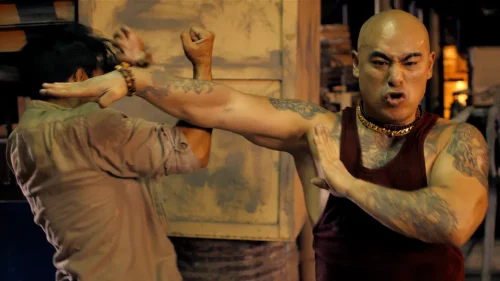


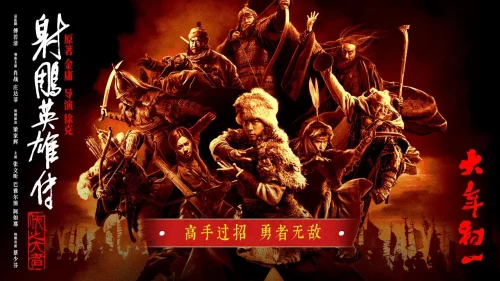
Люди, а не будет ли кто так любезен ещё раз куда-то выложить или ткнуть в ссылку «Hit & Run» с Таслимом? Потерял, а захотелось пересмотреть.
Wave,
Блин. Уже удалил с файлообменника. Мож попозже закину. Фильм так и не перевели?
Я не смог даже оригинала нагуглить. Ни в тот раз, ни в этот. Твоё гугл-фу оказалось сильнее.
Всё так. Донни Ен показал класс в стиле нулевых, но возраст даёт о себе знать. Оденкирк не боец и староват. Псих — заигрались в Джеки Чана, но момент с резинкой действительно классный. Кенсин — тоже всё так. И Таслим с Санадой — лучшее, что было в фильме. И Энди Ле вообще офигенно отжёг.